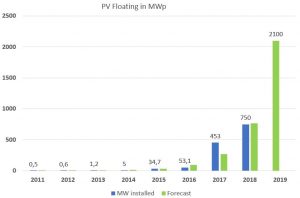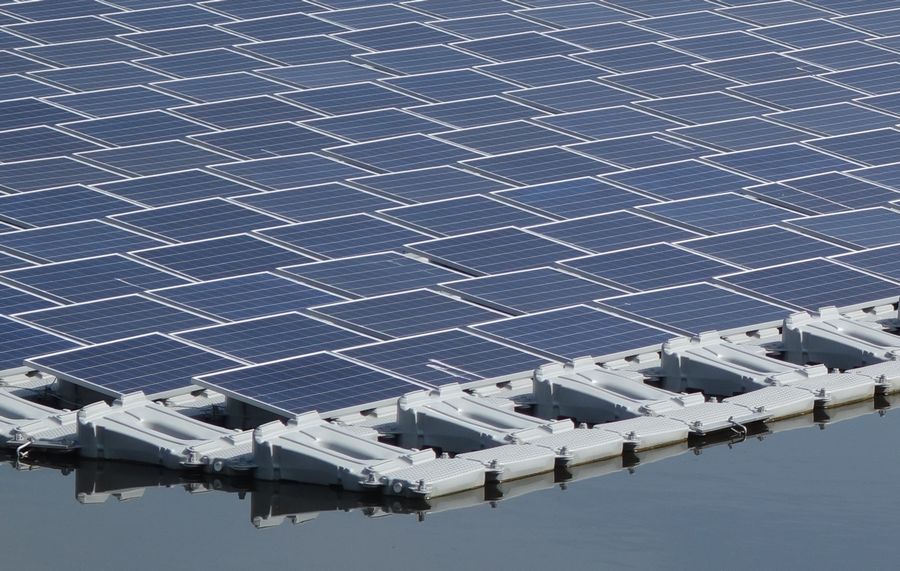What is PERC solar technology and why should we know about that ?
ژانویه 17, 2019Date : 23 Jan 2019
-
National Renewable Energy Laboratory (NREL) researchers estimate that installing floating solar photovoltaics on the more than 24,000 human-made U.S. reservoirs could generate about 10 percent of the nation’s annual electricity production. Their findings, published in the journal Environmental Science & Technology, reveal for the first time the potential for floating PV to produce electricity in the United States.
While the United States was the first to demonstrate floating PV panels — with the first installation occurring 10 years ago on pontoons on an irrigation pond in Napa Valley, California — the idea has not received widespread national acceptance. The U.S. focus has primarily been on installing large-scale, ground-mounted solar panels, and only had seven floating PV sites as of December 2017. Floating PV sites are being deployed more overseas, however, with more than 100 sites as of the end of last year. Japan, for example, is home to 56 of the 70 largest floating PV installations.
Photo shows solar panels floating on a body of water.
“In the United States, it’s been a niche application; where in other places, it’s really been a necessity,” said Jordan Macknick, the lead energy-water-land analyst for NREL and principal investigator of the project that produced the paper “Floating PV: Assessing the Technical Potential of Photovoltaic Systems on Man-Made Water Bodies in the Continental U.S.” “We’re expecting it to take off in the United States, especially in areas that are land-constrained and where there’s a major conflict between solar encroaching on farmland.”
Macknick and his NREL co-authors, Robert Spencer, Alexandra Aznar, Adam Warren, and Matthew Reese, estimate about 2.1 million hectares of land could be saved if solar panels were installed on bodies of water instead of on the ground. The use of floating PV comes with additional benefits, including reduced water evaporation and algae growth. Spencer, lead author of the paper, added that in some cases benefits could be greater than those documented in the paper, but that the team used “strict assumptions that would give us a very conservative estimate of the total potential generation and benefits.” The NREL team also found that operating floating PV alongside hydroelectric facilities yields increased energy output and cost savings because of existing transmission infrastructure.
“Floating solar is a new industry enabled by the rapid drop in the price of solar PV modules,” said Warren, director of NREL’s Integrated Applications Center. “The cost of acquiring and developing land is becoming a larger part of the cost of a solar project. In some places, like islands, the price of land is quite high, and we are seeing a rapid adoption of floating solar.”
-
In Iran, during the past years, a lot of research has been carried out in this field, and some water dams and reservoirs have been identified and are ready to invest in the construction of a floating solar power plant. The important point in this regard is the cost of floating power plants, which are more expensive than other types of solar power plants, such as installing on the roof or installing on the .ground, due to their unique floating structures. But the benefits of solar power
plants are enough to make the work convincing. Some of these benefits include:
1 Because of its water-cooled properties and the effect on the solar panel’s temperature modulation, floating solar power plants generate 20% more power than conventional power plants, and this alone can shorten the period of return on investment.
2 Avoid the evaporation of millions of cubic meters of water annually and help preserve important water reserves as well as tackle the water scarcity crisis.
3 Avoid the growth of algae due to water shadow.
4 Solar structures are anti UV resistant and resistant to sunlight, and have longer life time.
5 Simplicity in the development of the floating power plant due to its pre-made structures and easy installation
Source news: DOE/National Renewable Energy Laboratory

Global statistics on the amount of energy produced by floating solar power plants in the world by the end of 2018 and global predictions by the end of 2019




